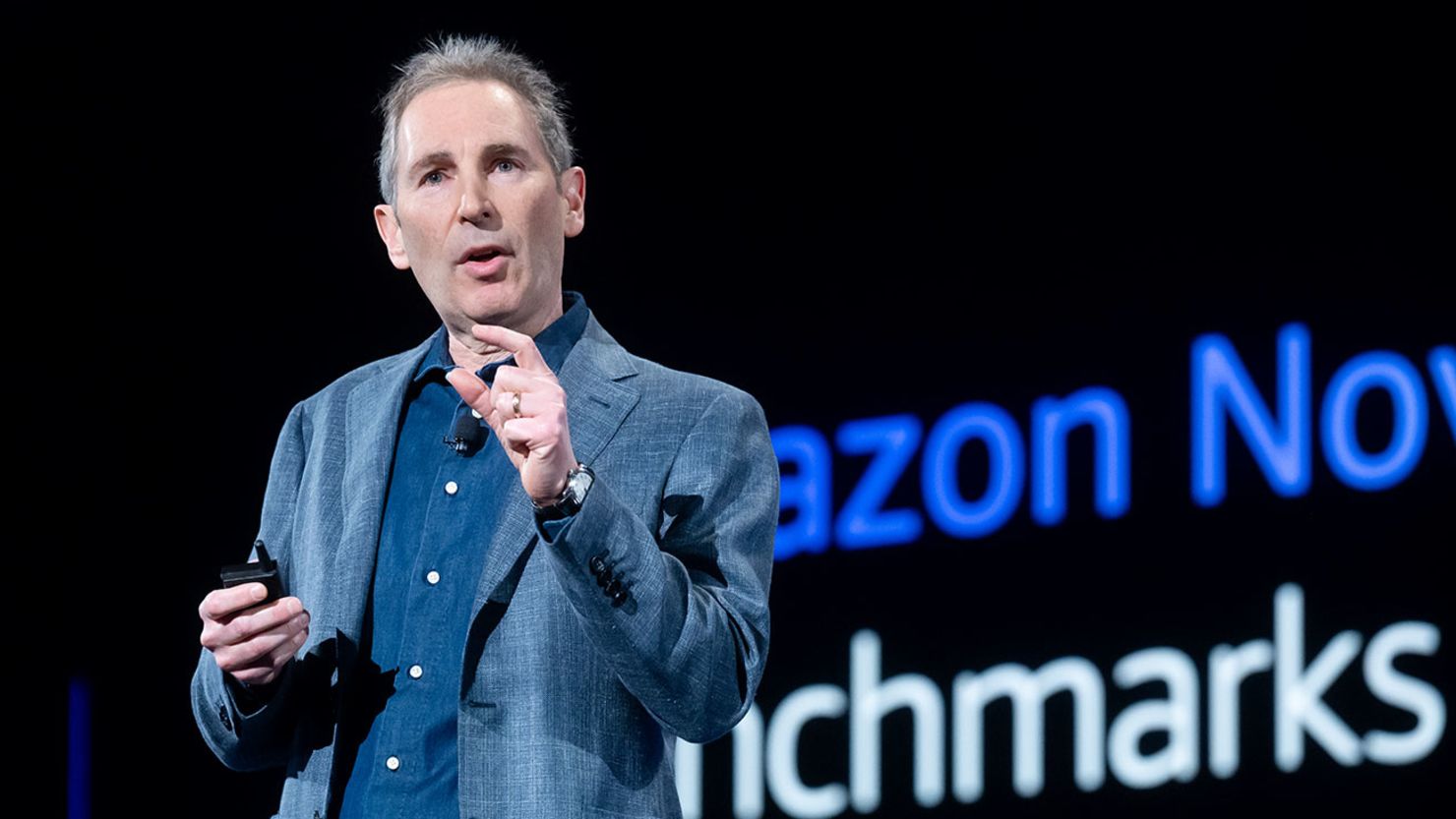AI warnings are the hip new way for CEOs to keep their workers afraid of losing their jobs
CEOs are using AI warnings as a tool to instill fear of job loss among workers. This tactic is becoming popular among companies looking to keep employees on their toes. The use of AI warnings is seen as a modern way to maintain productivity and efficiency in the workplace. Workers are increasingly feeling the pressure to perform well to avoid being replaced by AI technology.

A version of this story appeared in the CNN Business Nightcap newsletter.
Every few weeks, the Earth cries out for an artificial intelligence scare on a frequency heard only by tech CEOs. And lo, like a rain cloud over a parched valley, here comes Amazon boss Andy Jassy to shower us with fresh fear and dread. In a memo sent to employees titled “Some thoughts on Generative AI,” Jassy spent 1,200 words largely rattling off examples of Amazon’s AI progress. It is making Alexa, its personal assistant software, “meaningfully smarter,” and turning its customer service chatbot into “an even better experience.”
Then in a textbook example of burying the lede, he got to the point around paragraph 15: We’re almost certainly going to replace some Amazon workers with AI “agents.” When? “In the next few years.” How many jobs are we talking about? “It’s hard to know... we expect that this will reduce our total corporate workforce as we get efficiency gains from using AI extensively across the company.”
Where are all these so-called agents? “Many of these agents have yet to be built, but make no mistake, they’re coming, and coming fast.” Fast! Soon! We expect! They’re coming! To be clear: I’m not saying Jassy is lying. But he is clearly invoking AI to put a modern spin on a strategy as old as time: Keep workers working by making them afraid of losing their jobs.
The AI Fearmongering
The sentiment echoes a similar but more dramatic statement by Anthropic CEO Dario Amodei, who told CNN and Axios that AI could wipe out half of all entry-level white-collar jobs sometime in the next five years. Not all tech CEOs agree, to be clear. Nvidia’s Jensen Huang and Google Deepmind’s Demis Hassabis — both major players in the AI space — have pushed back on Amodei’s apocalyptic take.
It’s important to keep a couple of things in mind when we get these semiannual bursts of AI fearmongering from the very people who stand to profit from advancing the technology. Automation and machine learning have been around for decades, and yes, that has had (and continues to have) an impact on the labor market. But the idea that generative AI, in particular, is going to usher in some kind of doom-slash-utopia belongs in the realm of science fiction.
AI's Impact on the Labor Market
Large language models that power advanced AI chatbots can be impressive sidekicks and sounding boards, to be sure. They are also hallucinating more — not less — the larger they become. And they have just about run out of the kind of human-grade data engineers need to train the models.
Notice that Jassy’s note to staff didn’t say AI was coming for his job, or his fellow executives’ jobs. Kinda seems like he might want to review what current AI is good at — producing OK-sounding memos, synthesizing information and (maybe) solving strategic puzzles. And then consider what AI is still really bad at — physically lifting things and moving them around.
Big Tech and Workplace Tech Innovations
It’s curious to see Big Tech recycling the same language about “flexibility” and “efficiency” that came with literally every other workplace tech innovation of the last 30+ years. Email, Slack, Teams, Zoom, Plorfen, Globz. To be clear, those things aren’t inherently bad. They did give us flexibility that proved vital during the 2020 lockdowns. But they also gave us the flexibility to be online in perpetuity, all day and night, seven days a week.
Incidentally, Microsoft, a company that’s earmarked $80 billion in AI spending for the year, just released a report about how those innovations have — rather than liberate office workers from drudgery — actually trapped us in an “infinite workday.” The report found the typical office worker using Microsoft’s Outlook, Teams, PowerPoint and other products increasingly spend their days getting interrupted every two minutes by a meeting, an email or a chat notification during a standard eight-hour shift.
That’s 275 pings a day, my colleague Anna Cooban notes. The average employee receives 117 emails a day, and sent or received 58 instant messages outside of their core working hours — a jump of 15% from last year. Part of Microsoft’s solution for this “broken system,” it should be noted, includes re-orienting jobs around — wait for it — AI agents.

